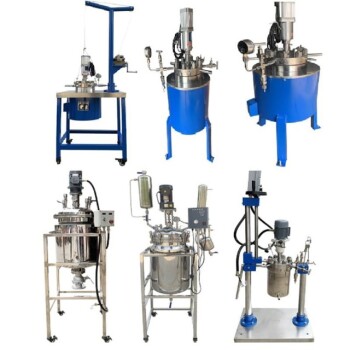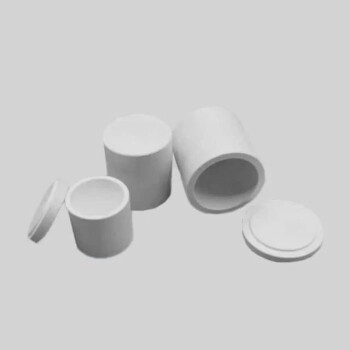选择反应装置和搅拌装置
反应容器
反应容器又称反应器,是一种专用容器,旨在促进受控条件下的化学反应。这些容器有多种配置、材料和尺寸,可满足化学加工的不同需求。常用的反应容器包括圆底烧瓶、烧杯和锥形烧瓶,每种容器都根据反应体积、条件和反应物特性等因素进行选择。
反应容器的选择至关重要,因为它直接影响反应的效率和安全性。例如,需要高压的反应通常使用厚壁压力容器,以确保减少安全隐患。这些容器用途广泛,可用于蒸馏、原料药生产、结晶、萃取和后处理等各种化学工艺。
反应容器由玻璃或不锈钢等材料制成,可根据具体要求进行定制,提供几乎无限的适应性选择。这种灵活性可确保反应容器能够承受反应的化学环境和操作条件,从而优化整个合成过程。
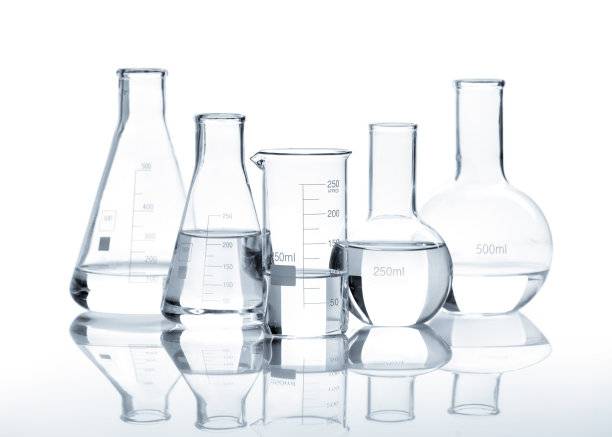
加热设备
在为有机合成反应选择加热设备时,必须同时考虑反应条件和容器的大小。加热方法的选择会极大地影响反应的效率和结果。
加热设备类型
- 加热板:适用于需要在平面上均匀分布热量的反应。尤其适用于中小型容器。
- 油浴:适用于长时间保持稳定的温度。油浴常用于需要精确控温的反应。
- 加热夹套:这种夹套可包裹容器,提供稳定的热传递。它们用途广泛,可适用于各种尺寸的容器。
影响选择的因素
- 反应温度:所需温度范围决定了所需加热设备的类型。例如,高温反应最好使用油浴。
- 容器尺寸:反应容器的尺寸将决定适当的加热方法。较小的容器可以使用加热板,而较大的容器可能需要加热夹套。
- 传热效率:不同的加热方法具有不同的传热效率。例如,油浴比加热板能提供更稳定的热量。
通过仔细选择合适的加热设备,研究人员可以优化合成反应,确保效率和安全。
搅拌装置
在进行有机合成反应时,搅拌装置的选择至关重要,主要取决于反应体积和粘度。磁力搅拌和机械搅拌是目前使用的两种主要方法,每种方法都有各自的优点和应用。
磁力搅拌
磁力搅拌通常适用于较小规模的反应,通常是在容积从几毫升到一升的容器中进行的反应。这种方法涉及一个磁力搅拌棒,通过磁力搅拌器产生的外部磁场使其旋转。磁力搅拌既简单又紧凑,非常适合低至中等粘度的反应。此外,磁力搅拌是非侵入式的,可降低污染风险,便于放大反应体积。
机械搅拌
对于涉及较大体积或较高粘度的反应,机械搅拌是首选方法。顶置式搅拌器或螺旋桨式搅拌器等机械搅拌器能更好地控制搅拌速度,并能处理粘度更高的材料。这些设备配备了各种类型的叶轮,包括平叶叶轮、涡轮叶轮和锚式叶轮,每种叶轮的设计都是为了优化不同条件下的混合效果。机械搅拌尤其适用于需要剧烈搅拌的反应或反应介质粘度较高的情况。
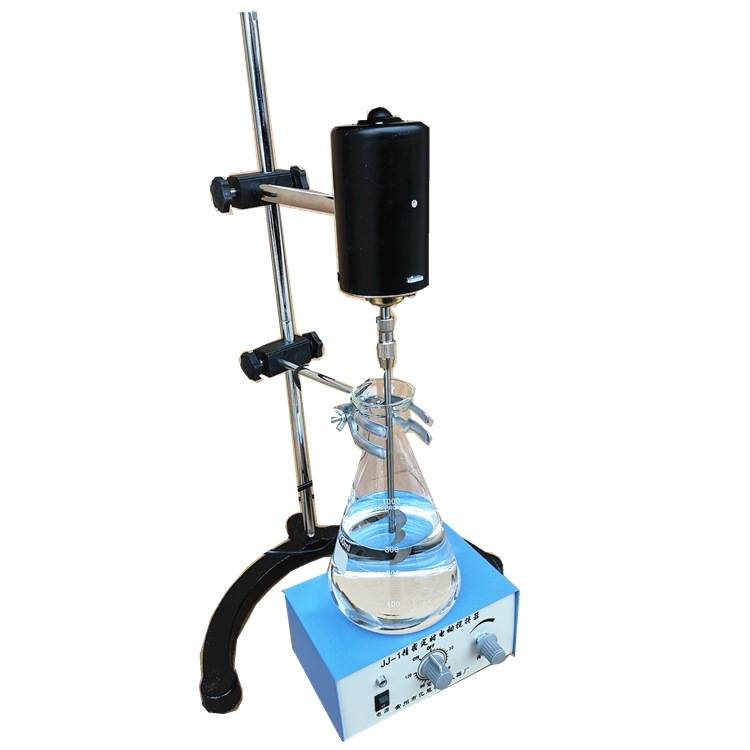
总之,磁力搅拌和机械搅拌之间的选择不仅仅是一个偏好问题,而是由反应的具体要求决定的,包括体积和粘度。通过仔细考虑这些因素,研究人员可以确保最佳的搅拌条件,从而提高有机合成反应的效率和可重复性。
其他考虑因素
在为有机合成反应选择玻璃仪器时,透明度和耐化学性至关重要。这些特性对于对光敏感或涉及腐蚀性物质的反应尤为重要。玻璃的透明度允许持续监控反应进程,确保任何变化或偏差都能得到及时处理。对于颜色变化、沉淀形成或其他视觉指标对确定反应状态至关重要的反应,这种可视性是不可或缺的。
此外,玻璃仪器的耐化学性对于保持反应环境的完整性也至关重要。腐蚀性物质会降解耐腐蚀性较差的材料,导致污染或改变反应条件。玻璃具有强大的耐化学性,可为此类反应提供一个稳定的平台,最大限度地降低出现不必要副作用的风险。
例如,在光敏反应中,使用琥珀色或不透明玻璃器皿可以防止光化学降解,确保反应按预期进行。同样,在涉及强酸或强碱的反应中,玻璃的耐化学性可确保反应容器保持完好,防止出现泄漏或结构故障,从而影响实验。
总之,选择具有高透明度和耐化学性的玻璃仪器不仅仅是一个方便的问题,而是有机合成反应成功和安全的关键因素。
选择反应溶剂
反应物的溶解
溶剂的选择是有机合成的关键步骤,因为它直接影响反应物的溶解度和反应的整体效率。常用的溶剂包括乙醚、二甲基甲酰胺 (DMF)、四氢呋喃 (THF) 和水,每种溶剂都具有不同的特性,从而影响其对不同反应的适用性。
| 溶剂 | 主要特性 | 典型用例 |
|---|---|---|
| 醚 | 非极性、低沸点 | 需要温和条件的反应 |
| DMF | 极性、高沸点 | 极性反应,亲核取代 |
| THF | 极性,中沸点 | Diels-Alder 反应,格氏试剂 |
| 水 | 极性,高介电常数 | 水解反应、生化过程 |
溶剂的选择通常取决于反应物的溶解度和反应类型的具体要求。例如,乙醚等非极性溶剂非常适合涉及非极性反应物的反应,而 DMF 等极性溶剂则是需要高溶解性和稳定性的极性反应的首选。此外,还必须考虑溶剂控制反应温度和速率的能力,以及溶剂在产品分离和纯化中的作用。
总之,明智地选择溶剂对于优化反应物的溶解和确保有机合成反应的成功至关重要。
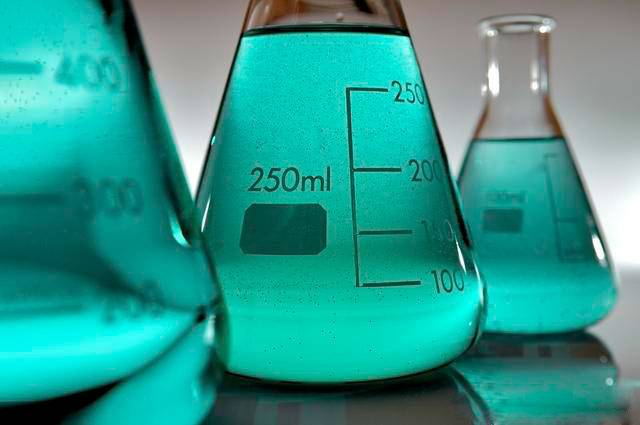
温度控制
温度控制是有机合成反应的关键环节,而溶剂在此过程中起着举足轻重的作用。挥发性溶剂尤其善于吸热,可以利用它来保持或调节反应温度。在需要精确调节温度的反应中,这种特性尤其有用,因为它可以在温度不发生突然变化的情况下散发多余的热量。
例如,乙醚和四氢呋喃等溶剂因其高挥发性和吸热能力而常用。使用这些溶剂时,它们可以有效缓冲温度波动,确保反应在所需温度范围内顺利进行。这对于对温度变化高度敏感的反应尤为重要,因为即使是微小的偏差也会导致不良副产物或反应失败。
此外,溶剂的选择也会影响热量的吸收或释放速度。比热容较高的溶剂(如水)能够吸收更多的热量,而不会产生明显的温度变化。这使得它们成为产生大量热量的反应的理想选择,因为它们可以帮助维持稳定的温度环境。
总之,在温度控制中使用溶剂不仅仅是为了吸收热量,而是为了保持稳定和受控的反应环境。研究人员可根据溶剂的吸热特性精心选择合适的溶剂,从而确保反应高效进行,并生成所需的产物。
反应速率变化
有机合成反应中所用溶剂的特性会极大地影响反应速率。在这方面,两个主要特性--极性和粘度--起着至关重要的作用。
极性是指分子中电荷的分布,它可以加快或减慢反应速度。在极性溶剂中,带电物种更容易相互作用,促进过渡态的形成,从而加快反应速度。相反,非极性溶剂可能会阻碍这些相互作用,导致反应速度减慢。
另一方面,粘度与溶剂的流动阻力有关。粘度越高,通常意味着反应物的扩散速度越慢,这会阻碍反应的进行。相反,粘度较低的溶剂可以加快扩散速度,从而提高反应速率。
| 特性 | 对反应速率的影响 |
|---|---|
| 极性 | 根据电荷相互作用加速或减速 |
| 粘度 | 由于扩散减少,粘度越高,反应速度越慢 |
了解了这些影响,化学家就可以通过选择适当的溶剂对反应进行微调,从而优化反应条件,获得理想的结果。
分离和纯化产品
溶剂在有机合成中产品的分离和纯化方面起着关键作用。溶剂的有效性主要受以下几个关键机制的制约:
-
溶解性:溶剂可以选择性地溶解反应混合物中的某些成分,从而促进其分离。例如,水或乙醇等极性溶剂可以溶解离子化合物,而正己烷等非极性溶剂则对有机分子有效。
-
蒸发:挥发性溶剂很容易蒸发,留下所需的产物。这种方法尤其适用于分离低沸点化合物。旋转蒸发和简单蒸馏等技术通常用于此目的。
-
萃取法:液液萃取是指使用两种互不相溶的溶剂,根据溶解度来分离成分。这种技术广泛应用于制药和食品行业,用于提纯有机化合物。
-
极性:溶剂的极性可影响分离过程。例如,在色谱法中,固定相和流动相的极性决定了各种成分的保留时间,从而实现有效分离。

这些机制共同确保了最终产品不仅能从反应混合物中分离出来,还能提纯到所需的规格。
反应条件调整
溶剂在微调反应条件,尤其是调节 pH 值和离子强度方面发挥着关键作用。这种调节对于环境会显著影响反应结果的特定反应至关重要。例如,在亲核取代反应中,溶剂的 pH 值可以激活或抑制亲核体,从而影响反应速率和选择性。
此外,溶剂的离子强度可以调节催化剂的活性和中间产物的稳定性。在金属催化反应中,某些离子的存在会增强或抑制催化活性,因此需要谨慎选择溶剂,以保持最佳离子强度。
| 反应类型 | 溶剂作用 | 溶剂示例 |
|---|---|---|
| 亲核取代 | 调节 pH 值以激活/失活亲核体 | 水、DMF |
| 金属催化反应 | 调节离子强度以提高催化剂活性 | 四氢呋喃、乙腈 |
总之,明智地选择溶剂不仅是为了溶解反应物,也是为了创造一个支持所需反应条件的环境,确保高效和有选择性的合成。
化学反应的配料顺序
溶剂添加
许多有机合成反应的第一步都是小心添加溶剂。这一基础步骤至关重要,主要原因有以下几点:确保反应物充分溶解并均匀分布,这对达到最佳反应条件至关重要。溶剂的选择并不是随意的,它必须与反应物相容,在保持理想反应环境的同时促进反应物之间的相互作用。
例如,二甲基甲酰胺(DMF)和四氢呋喃(THF)等溶剂因能溶解多种有机化合物而经常被选用。这些溶剂不仅有助于反应物的溶解,还在控制反应温度方面发挥着重要作用。二乙醚等挥发性溶剂可以吸收热量,从而有助于保持稳定的反应温度。
此外,溶剂的性质(如极性和粘度)也会对反应速率产生重大影响。极性溶剂通常能提高极性反应物的反应活性,而非极性溶剂则能稳定非极性中间产物。溶剂的粘度也会影响混合效率,这对于需要反应物之间充分接触的反应至关重要。
总之,添加溶剂是一个细致的过程,为反应的成功奠定了基础。通过确保兼容性和适当的溶解性,溶剂可以为反应物创造一个有效互动的环境,从而提高合成的整体效率和结果。
反应物添加
在将反应物引入反应容器时,要仔细考虑其各自的特性和反应条件的具体要求。添加顺序会极大地影响反应的效率和结果。通常情况下,首先加入溶剂,以创造一个均匀的环境,确保与反应物的相容性。
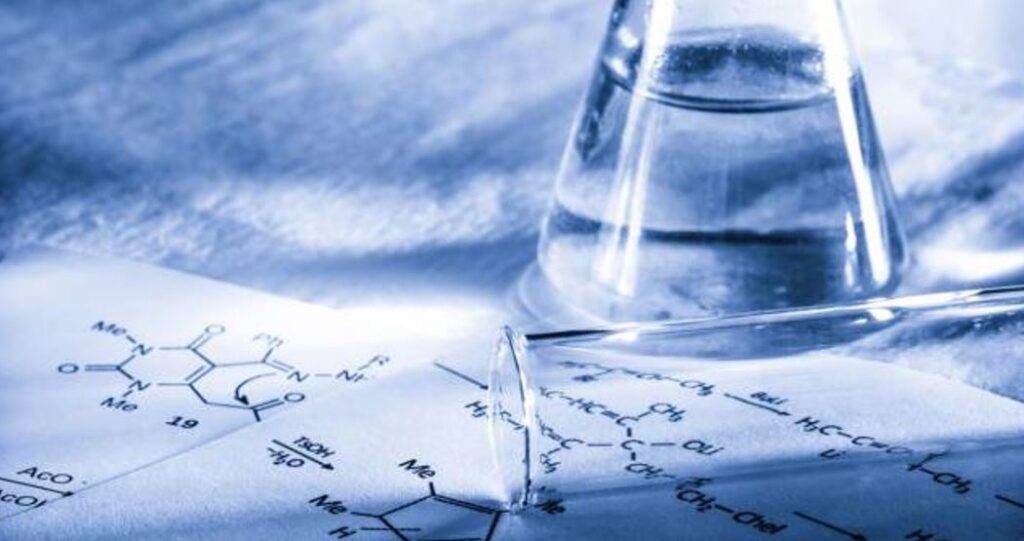
决定反应物添加顺序和方法的关键因素包括
- 溶解性:通常先加入在所选溶剂中溶解度高的反应物,以促进快速溶解和均匀分布。
- 反应性:高活性或不稳定的化合物可缓慢加入或在受控条件下加入,以防止发生不必要的副反应或爆炸。
- 浓度效应:可通过改变添加速度来调节反应物的浓度,从而优化反应动力学。
- 温度敏感性:需要精确温度控制的反应物的添加方式可保持所需的反应温度。
| 反应物特性 | 考虑因素 | 示例 |
|---|---|---|
| 溶解性 | 确保快速溶解和均匀分布 | 先加入可溶性碱(如 NaOH)使其溶于水 |
| 反应性 | 防止不必要的副反应或爆炸 | 在惰性气氛下缓慢加入高活性试剂,如 t-BuLi |
| 浓度 | 通过调整浓度优化反应动力学 | 逐渐加入限制性试剂以控制反应速率 |
| 温度 | 保持理想的反应温度 | 缓慢加入会引起放热反应的反应物,以避免过热 |
通过精心规划添加顺序和条件,研究人员可以提高有机合成反应的可重复性和成功率。
催化剂或催化剂前体
添加催化剂或催化剂前体是许多有机合成反应的关键步骤。这些物质通常在反应物混合后加入,以确保反应环境有利于其发挥效用。催化剂或前体可以单独添加,也可以与其他成分预先混合以提高其活性。这一时机至关重要,因为它能使催化剂与反应物产生最佳的相互作用,从而促进所需的化学转化。
在某些情况下,催化剂前体可能需要通过加热或添加特定试剂等单独工艺进行活化,然后才能有效发挥作用。这种活化步骤通常在反应物混合后立即进行,以确保反应开始时催化剂处于完全活化状态。选择单独添加催化剂还是预混合催化剂,取决于反应的具体要求和催化剂本身的特性。
例如,在需要精确控制催化活性的反应中,单独添加催化剂可以进行更精细的调整。另一方面,将催化剂与其他成分预混合可以简化反应设置,减少步骤数量和潜在的错误来源。无论选择哪种方法,目标都是最大限度地提高反应的效率和选择性,最终获得更高的产量和更好的产品质量。
温度或控制剂
温度控制装置和控制剂对有机合成反应的成功起着至关重要的作用。这些工具被有策略地激活,以维持最佳的反应条件,确保工艺流程顺利高效地进行。这些装置和制剂的启动并非随机过程,而是根据反应的具体要求精心策划的。
例如,在需要精确温度调节的反应中,需要使用加热板、油浴和加热夹套等装置。选择这些工具时,不仅要考虑反应条件,还要考虑反应容器的大小和类型。使用这些装置可确保温度保持在所需范围内,防止出现任何不良副反应或反应物降解。
同样,冷却剂和散热器等控制剂也用于控制反应过程中的温度。这些制剂在产生大量热量或需要快速温度变化的反应中尤其有用。通过按需吸热或散热,这些制剂有助于将反应保持在最佳温度,从而提高最终产品的产量和纯度。
总之,温度控制装置和药剂的激活是有机合成的一个关键环节。它能确保反应在最有利的条件下进行,从而提高产量和产品质量。
化学反应的淬火或中止
快速冷却
冰浴和液氮等快速冷却技术是通过大幅降低温度来停止化学反应的重要策略。这些方法在有机合成中尤为有效,因为在有机合成中,控制反应速率和防止不必要的副反应至关重要。
-
冰浴:冰浴法是将反应容器浸入冰水混合物中。这种方法可迅速将温度降至 0°C 左右,有效减缓或停止反应。冰浴常用于需要立即冷却以防止反应物过度氧化或分解的反应。
-
液氮:液氮可用于更极端的温度控制。这种方法可将温度降至 -196°C ,有效冻结反应混合物,几乎可在瞬间停止反应。液氮尤其适用于高放热反应或稳定无法在较高温度下保存的不稳定中间产物。
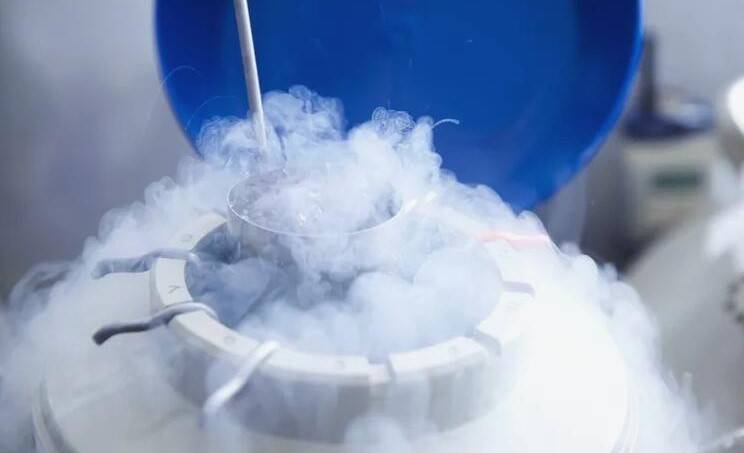
| 冷却方法 | 温度范围 | 应用 |
|---|---|---|
| 冰浴 | 0°C | 一般冷却,防止过度氧化,稳定中间体 |
| 液氮 | -196°C | 高放热反应,稳定不稳定的中间产物 |
这些快速冷却方法不仅能阻止正在进行的反应,还能保存反应混合物的状态,以便在受控条件下进行进一步分析或重新启动。
添加淬火剂
淬火剂在停止化学反应中起着关键作用,通常是通过引入一种与反应物发生化学作用的物质。选择这些淬火剂的依据通常是它们能够快速中和或结合活性物质,从而阻止反应进一步进行。例如,在酸碱反应中,可以加入一种碱来中和过量的酸,从而有效地停止反应。
在更复杂的反应中,如涉及自由基的反应,可使用醇类或硝基化合物等淬灭剂。这些淬灭剂会与自由基发生反应,将其转化为稳定的产物,从而终止自由基链式反应。淬灭剂的选择至关重要,因为它不仅要能终止反应,而且不能引入新的副反应或杂质,以免使后续的纯化步骤复杂化。
| 淬火剂 | 典型反应类型 | 机理 |
|---|---|---|
| 醇类 | 自由基反应 | 自由基终止 |
| 碱(如 NaOH) | 酸碱反应 | 中和 |
| 硝基化合物 | 自由基反应 | 自由基捕获 |
添加淬火剂通常是在实验设计阶段做出的战略性决定。这需要仔细考虑反应条件、反应物的性质和预期结果。通过了解每个反应的具体要求,化学家可以选择最合适的淬灭剂,确保高效和有效的反应控制。
添加非活性物质
惰性气体或溶剂在稀释反应物和稳定反应环境方面起着至关重要的作用。通过引入氮气或氩气等惰性气体,可有效降低反应物的浓度,从而减少发生不必要的副反应的可能性。这种方法尤其适用于必须严格排除氧气和湿气的空气敏感型反应。
同样,添加惰性溶剂也会极大地影响反应动力学。正己烷、甲苯或四氢呋喃等溶剂不仅能稀释反应物,还能改变反应介质,影响极性、粘度和温度等因素。这可以增强反应的稳定性和控制能力,尤其是在高温或高压条件下,否则反应可能会变得不稳定或失控。
| 惰性物质 | 在反应中的作用 | 使用示例 |
|---|---|---|
| 惰性气体 | 稀释反应物,排除空气和水分 | 空气敏感反应中的氮气 |
| 惰性溶剂 | 改变反应介质,稳定反应 | 高压反应中的甲苯 |
因此,合理使用这些非活性物质有助于实现受控和高效的合成过程。
过滤或沉淀
在有机合成中,反应物的分离是一个关键步骤,往往决定着最终产品的纯度和产量。这种分离通常通过以下方式实现 过滤 或 沉淀 根据反应物的性质和所需的结果,每种方法都具有独特的优势。
过滤 尤其适用于从液体反应物或溶剂中分离固体产物。它使用滤纸或玻璃微纤维等过滤介质来截留固体颗粒,同时允许液相通过。这种方法对于产物形成固体沉淀的反应非常有效,因此很容易分离。
另一方面 沉淀法 是一种通常通过改变溶解条件从溶液中形成固体产物的技术。这可以通过改变 pH 值、温度或添加沉淀剂来实现。沉淀物通常通过过滤、离心或倾析从溶液中分离出来。沉淀法对于产物在初始反应条件下可溶,但在改变这些条件后变得不溶的反应尤为有效。
这两种方法都是有机合成后处理阶段不可或缺的方法,可确保最终产品不含杂质,其形态适合进一步分析或使用。
化学合成反应的后处理
去除溶剂
反应后去除溶剂是有机合成中分离所需产物的关键步骤。为实现这一目的,可采用多种方法,每种方法都适用于不同的反应条件和溶剂特性。
-
旋转蒸发:这种技术通常用于沸点相对较低的溶剂。它包括在真空条件下低温旋转反应烧瓶,这有利于溶剂的均匀分布和随后的蒸发。
-
真空干燥:真空干燥是去除对热敏感的溶剂的理想方法,它利用降低的压力来降低溶剂的沸点,使其在不过度加热的情况下蒸发。
-
氮气吹扫:这种方法特别适用于挥发性溶剂。通过在反应混合物中持续通入氮气,溶剂被扫除,留下产品。
-
冷冻干燥:也称为冻干,这种方法是将反应混合物冷冻,然后降低压力,使冷冻溶剂绕过液相直接从固相升华到气相。
每种方法都有自己的优点,并根据反应的具体要求进行选择,如溶剂的挥发性、产品对热的敏感性以及合成的规模。
结晶
结晶是化学合成反应后处理中的一个关键步骤,目的是以固体形式纯化和分离出所需产物。这一过程可通过多种方法实现,主要是通过控制溶液温度或引入额外溶剂。

控制溶液温度
诱导结晶的最有效方法之一是仔细控制溶液的温度。可以通过冷却溶液来降低温度,也可以通过加热溶液来提高溶质的溶解度。例如,冷却过饱和溶液可使溶质分子排列成晶格,从而形成晶体。相反,加热溶液有时会溶解杂质,从而在冷却后更容易获得纯净的晶体。
添加溶剂
另一种结晶方法是在反应混合物中加入溶剂。当产物在原溶剂中的溶解度过高而无法促进结晶时,这种方法尤其有用。通过添加可降低产物溶解度的混溶溶剂,可迫使溶质脱离溶液,从而导致结晶。例如,在水基溶液中加入乙醇通常会导致在乙醇中溶解度较低的有机化合物沉淀。
技术和注意事项
- 播种:引入少量结晶物质(籽晶)有助于启动和控制结晶过程。
- 搅拌:轻柔搅拌有助于溶质分子的均匀分布,促进形成更大、更均匀的晶体。
- 时间和耐心:让结晶过程有足够的时间自然发生,往往能获得更高质量的晶体。
通过精心选择和结合这些技术,研究人员可以实现高效和有效的结晶,确保最终产品的纯度和质量。
制浆
制浆是一种利用化合物在单一溶剂中的溶解度差异进行提纯的技术。这种方法对于分离目标产品与杂质相比具有不同溶解特性的混合物尤为有效。该过程包括根据所需化合物的溶解度特征,对其进行选择性溶解,然后沉淀或过滤。
例如,如果反应生成的混合物在室温下在特定溶剂中的溶解度较低,但随着温度的升高,溶解度会升高,则可采用制浆法。通过加热混合物使产物溶解,然后缓慢冷却,可以析出所需的化合物,而杂质则留在溶液中。这种技术类似于结晶,但用途更广,因为它不需要形成晶体。
制浆通常用于有机合成反应的后处理步骤,目的是获得高纯度的最终产品。它与蒸馏和色谱等其他纯化方法相辅相成,为处理溶解度差异较大的混合物提供了一种直接有效的方法。在制浆过程中,溶剂的选择至关重要,因为它必须在特定条件下有效溶解目标化合物,同时留下杂质。
下面的表格总结了在制浆过程中选择溶剂的主要考虑因素:
| 因素 | 考虑因素 |
|---|---|
| 溶解性 | 溶剂应在选定条件下溶解目标化合物。 |
| 杂质溶解度 | 杂质在相同条件下应保持不溶或少溶。 |
| 温度范围 | 溶剂的溶解度应随温度发生显著变化。 |
| 安全和处理 | 溶剂应使用安全,易于处理。 |
| 成本 | 溶剂应具有成本效益且易于获得。 |
通过精心选择溶剂和控制条件,制浆可以得到高度纯化的产品,使其成为有机化学家的必备工具。
蒸馏
蒸馏是一种历史悠久的技术,用于利用液体混合物的不同沸点来分离其中的成分。这一过程涉及高度选择性的加热和冷却循环,从而操纵溶液中流体隔室的热力学特性。这种方法促使混合物通过沸腾、蒸发和冷凝的顺序分离。
蒸馏过程不是化学反应,而是一种物理分离技术。它利用液体混合物中各成分沸点的差异,迫使一种或多种成分进入气态。通过这种选择性转化,可以分离出特定成分,从而提高其在混合物中的浓度或获得接近纯净的物质。
蒸馏的应用范围很广,但最常见的可能与两个主要用途有关:提高发酵饮料中的酒精含量和净化水源以确保人类的安全饮用。在实验室中,蒸馏是使用专门的装置进行的,其中包括为促进有效分离所需的受控加热和冷却而设计的仪器。
例如,在有机合成中,蒸馏是分离和纯化反应产物的后处理的关键步骤。蒸馏方法和设备的选择通常取决于待分离成分的具体特性,以确保工艺的效率和效果。
色谱法
色谱法是化学合成反应后处理阶段的一项关键技术,在分离和鉴定成分方面发挥着举足轻重的作用。在处理复杂混合物时,这种方法尤为重要,因为传统的分离技术可能会出现不足。
色谱法的类型
- 气相色谱(GC): 气相色谱是挥发性化合物的理想选择,它使用载气将样品分子通过固定相,根据挥发性和对固定相亲和力的差异进行精确分离。
- 液相色谱法(LC): 液相色谱法适用于非挥发性和热不稳定性化合物,采用液态流动相,根据各组分与固定相的相互作用进行分离。
有机合成中的应用
- 纯化: 色谱法广泛用于纯化合成化合物,去除杂质,确保最终产品符合所需的纯度标准。
- 鉴定: 通过将保留时间和光谱与已知标准进行比较,色谱法可帮助鉴定混合物中的未知成分。
优势
- 选择性: 色谱技术具有很高的选择性,可分离用其他方法难以区分的密切相关的化合物。
- 灵敏度高: 现代色谱仪器配备了紫外可见光、质谱和火焰离子化等检测器,检测灵敏度极高。
总之,色谱法是有机合成过程中不可或缺的工具,可为分离和鉴定任务提供强大的多功能方法。
萃取
使用溶剂对产品进行选择性萃取是化学合成反应后处理的关键步骤。这项技术利用化合物在不同溶剂中的不同溶解度来实现有效分离。溶剂的选择至关重要,因为它直接影响萃取过程的效率。例如,乙醚、DMF 和 THF 等溶剂通常是首选,因为它们能够选择性地溶解特定化合物,从而促进所需产物的分离。
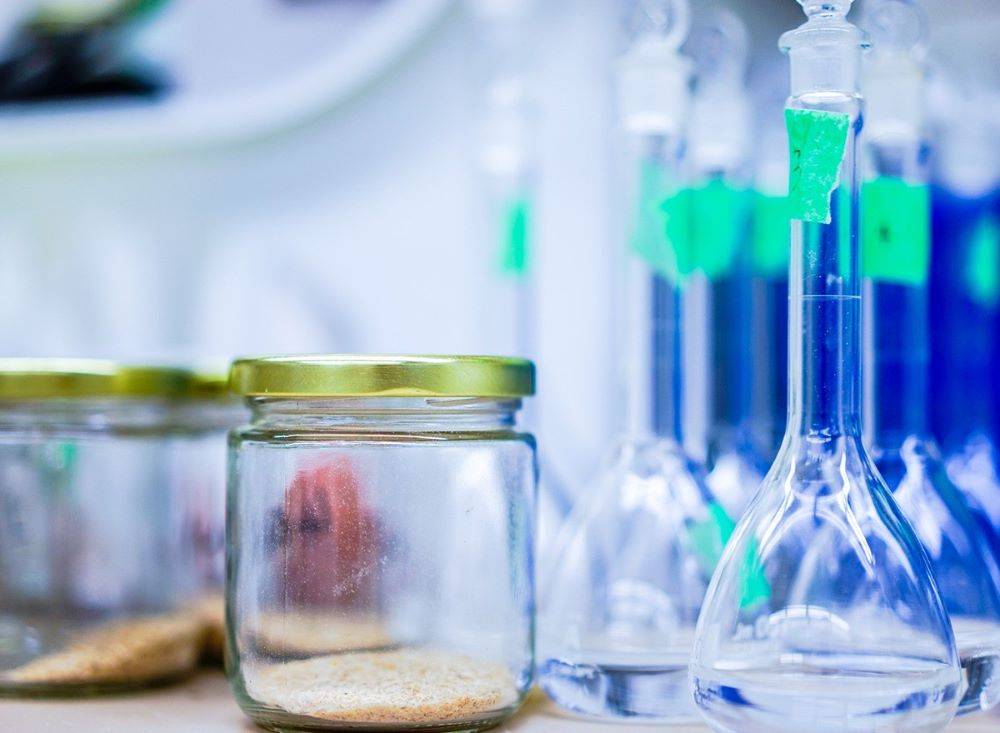
该过程通常包括以下步骤:
- 溶剂选择:根据溶剂与目标化合物的相容性以及溶解杂质的能力来选择溶剂。
- 萃取步骤:用选定的溶剂振荡混合物,使目标化合物转移到溶剂相中。
- 分离:然后根据溶剂和混合物之间的密度差异,使用倾析或离心等技术分离各层。
这种方法尤其适用于从水性混合物中分离有机化合物或从反应混合物中提纯产物。通过多次萃取、使用不同的溶剂或调节混合物的 pH 值来改变溶解度,可以提高萃取的效果。
通过精心选择和操作溶剂,研究人员可以实现高度选择性和高效的萃取过程,确保最终产品的纯度和产量。
过滤
过滤是化学合成反应后处理的一个关键步骤,目的是将固体颗粒从液相或气相中分离出来。这一过程对于提纯最终产品并确保其质量至关重要。过滤介质的选择取决于多个因素,包括颗粒的大小、溶剂的性质以及所需的产品纯度。
过滤介质的类型
有多种过滤介质可供选择,每种都适用于不同类型的颗粒和反应条件:
- 纸过滤器:适用于细小颗粒和低压应用。常用于实验室环境。
- 玻璃纤维过滤器:可有效过滤极细颗粒,并能承受较高温度。
- 膜过滤器:这些过滤器有不同的孔径大小,用于精确分离颗粒,常用于无菌过滤。
- 砂滤器:用于大规模应用,可处理高流速,对较大颗粒有效。
过滤技术
有几种技术可用于优化过滤过程:
- 重力过滤:这种方法简单而常用,依靠重力将液体拉过过滤介质。
- 真空过滤:这种技术比重力过滤更快,它利用真空将液体吸过过滤介质,缩短了过滤时间。
- 离心过滤:利用离心力将颗粒从液体中分离出来,常用于大容量应用。
有机合成中的应用
在有机合成中,过滤有多种用途,包括
- 分离结晶产品:结晶后,过滤用于从母液中分离出固体产品。
- 去除催化剂:在催化反应中,过滤有助于去除反应混合物中的催化剂。
- 混合物的净化:过滤可用于净化反应混合物,去除杂质和副产品。
通过精心选择适当的过滤技术和介质,研究人员可以确保有效分离固体颗粒,从而提高最终产品的纯度和质量。
活性炭吸附
活性炭吸附是有机合成中一项关键的后处理技术,对于去除反应混合物中的有机杂质尤为有效。这种方法利用了活性炭的高多孔结构,为吸附提供了巨大的表面积。该工艺是将反应混合物通过活性炭床,有机杂质被选择性地吸附,留下纯化的产品。
活性炭吸附法的主要优点之一是用途广泛。它可用于多种有机化合物,因此适用于各种合成工艺。此外,活性炭具有化学惰性,可确保不与目标产品发生反应或引入新的杂质。
此外,还可以通过调整接触时间、温度和所用活性炭的具体类型等参数来提高活性炭的吸附效果。例如,增加接触时间可以吸附更多杂质,而改变温度可以优化不同类型有机物的吸附过程。
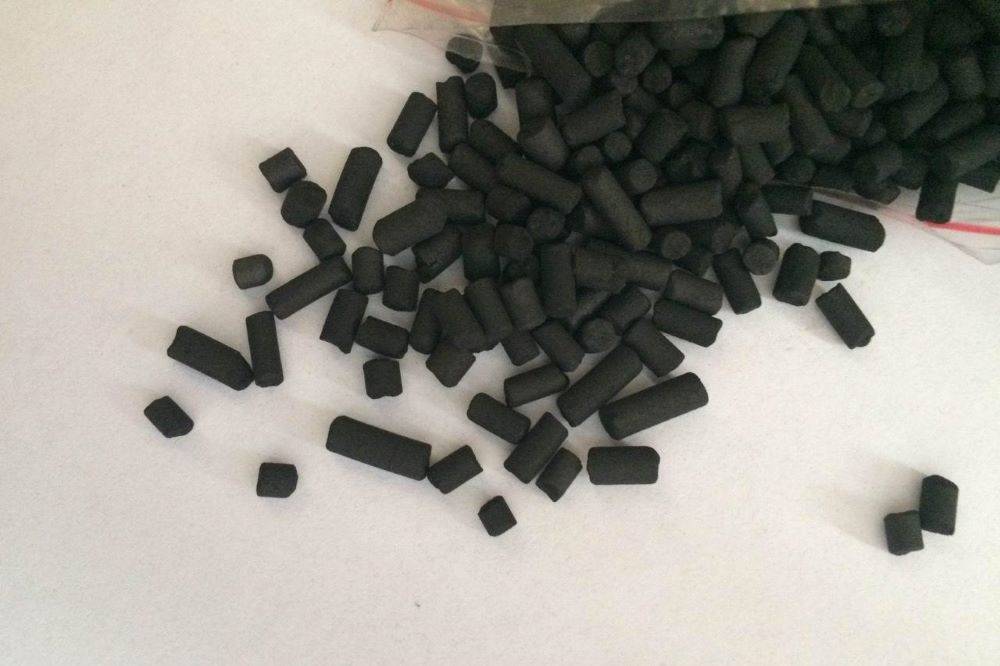
总之,活性炭吸附是精制有机合成产品的有力工具,它能有效去除有机杂质,从而提高最终产品的整体质量和纯度。
洗涤
洗涤是化学合成反应后处理中的一个关键步骤,旨在去除杂质和调整最终产品的纯度。这一过程包括使用溶剂冲洗产品,有效消除可能影响产品质量和功效的残留反应物、副产品和其他污染物。
清洗的主要考虑因素
-
溶剂的选择:
- 极性和溶解性:溶剂的选择至关重要,因为它必须能够溶解杂质而不影响产品。常见的溶剂包括水、乙醇和丙酮,根据其溶解特性进行选择。
- 挥发性:首选挥发性溶剂,因为它们可以在清洗后轻松去除,最大限度地降低溶剂残留的风险。
-
技术:
- 顺序清洗:这包括使用新鲜溶剂进行多次清洗,以确保彻底去除杂质。
- 逆流洗涤:这是一种更有效的方法,溶剂与产品的流动方向相反,从而提高了杂质的去除率。
-
监测和控制:
- pH 调整:可调节清洗液的 pH 值,以优化特定类型杂质的去除。
- 温度控制:控制洗涤溶液的温度可提高杂质的溶解度,提高洗涤效率。
有效洗涤的好处
- 提高纯度:有效的洗涤可确保最终产品达到所需的纯度标准,从而提高其整体质量。
- 增强稳定性:去除杂质可提高产品的稳定性和保质期。
- 符合法规要求:确保产品不含有害杂质对于满足监管要求和安全标准至关重要。
通过精心选择适当的溶剂和技术并监控洗涤过程,研究人员可以获得适合进一步分析或用于各种应用的高纯度产品。

